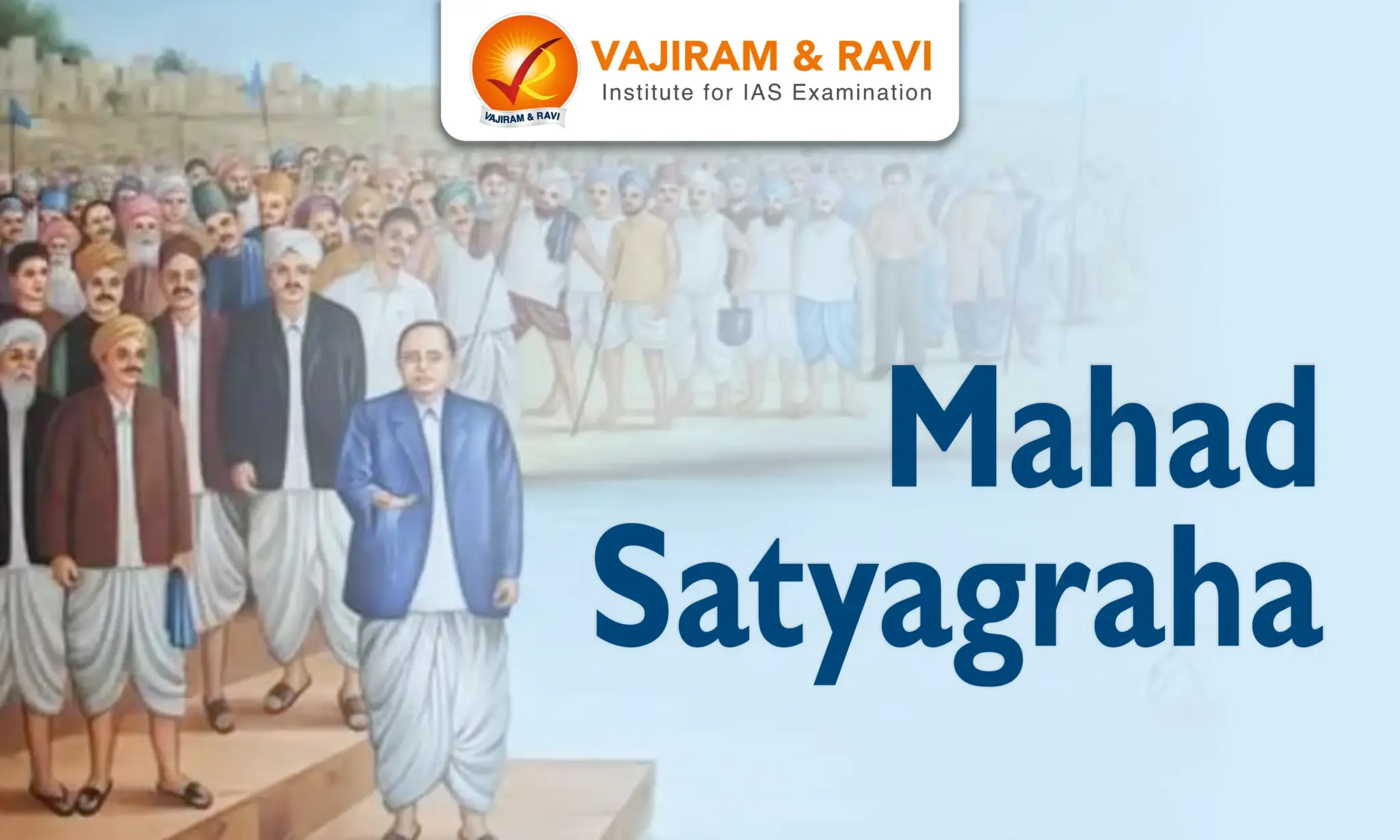Carnatic Wars Overview
The Carnatic Wars, fought between the British East India Company and the French East India Company between 1746 and 1763, marked a crucial chapter in Indian history. These wars, fought in the south of India, known as the Carnatic region, were part of the larger global conflict, the Seven Years' War, between Britain and France.
The Carnatic Wars resulted in a shift of power and territorial control, with the British East India Company ultimately emerging as the dominant colonial power in India. These conflicts shaped the course of Indian affairs under British colonial rule and paved the way for significant changes in governance and administration.
First Carnatic War 1746-48
- Austrian War of Succession: The Austrian War of Succession and the Seven Years' War, fought in Europe, had repercussions in India. These European conflicts between Britain and France also led to disputes over their colonial possessions in North America and India.
- Escalation of tensions: When the war broke out, Dupleix, the new Governor of Pondicherry, appealed to Morse, the Governor of Madras, to remain neutral. However, a British squadron under Commodore Barnett captured some French vessels carrying Indian goods, escalating the tensions.
- The assistance of Carnatic: Shocked by this incident, Dupleix sought assistance from Anwar-ud-din, the Nawab of Carnatic, to avoid war with the English. This led to a period of relative calm.
- French involvement: Dupleix contacted La Bourdonnais, the French Governor of the Isle of France, who arrived in Indian waters with eight warships. Peyton, leading the English squadron with four ships, intercepted the French squadron.
- Setback: In the battle on July 6, 1746, Peyton suffered setbacks and retreated to Hoogly, Calcutta, while expecting reinforcements from Britain.
Fall of Madras
- French success: The French squadron succeeded in capturing the undefended Madras on September 15, 1746. Governor Morse received a demand for surrender, but instead, he sought help from Anwar-ud-din.
- English relinquished Madras: Dupleix, being cunning, convinced the Nawab that he was securing Madras from the British to hand it over to him. As a result, on September 21, 1746, the English were compelled to relinquish Madras.
- Going back on the promise: However, when the Nawab of Carnatic requested the French to fulfil their promise and hand over Madras to him, the French evaded the request. In response, the Nawab dispatched a force of 10,000 men led by his son, Mahfuz Khan.
The Battle of San Thome and Adyar
- Nawab and French: The Nawab's forces blockaded Fort St. George, but the French forces managed to push them back to San Thome. The French received reinforcements, and Mahfuz Khan attempted to halt their progress near the banks of the Adyar River.
- Nawab defeated: However, the French forces successfully waded through the water and launched a severe attack on Nawab's forces, resulting in heavy losses.
- Dupleix turned towards English: Dupleix then turned his attention to Fort St. David in Cuddalore, which was under British control. The English, assisted by the Nawab of Arcot, were attempting to recapture the lost territories.
- Dupleix’s diplomacy: However, Dupleix played a diplomatic game by promising to raise Nawab's flag over Fort St. George for a week and then requested the Nawab to hand over the town to the French. The Nawab agreed and withdrew his support for the British.
- Attempt to capture Pondicherry: Two British attempts led by Rear-AdmiralBoscowen to capture Pondicherry failed. By 1748, France and England had signed the Treaty of Aix-la-Chapelle.
- Aix-la-Chapelle: According to the treaty, hostilities between the British and the French in India ceased. It was agreed that the French would hand over Madras to the British in exchange for Louisburg in North America.
Second Carnatic War 1749-54
In Europe, peace prevailed between the British and the French, but in India, the colonial powers could not coexist peacefully. They manipulated native rulers against each other to further their interests. Dupleix, aiming to enhance French influence, became involved in the wars of succession in Hyderabad and Arcot.
- Triple alliance: Dupleix supported Muzzafar Jung, the grandson of Asaf Jah, as the Nizam of Hyderabad after Asaf Jah died in 1748. In the Carnatic region, he supported Chanda Sahib's claim. A triple alliance was formed among the French, the Nizam, and the Nawab of Carnatic.
- English support: To diminish French influence, the English backed rival candidates such as Nasir Jung for the throne of Nizam of Hyderabad and Muhammad Ali after the death of Anwar-ud-din in the Battle of Ambur in 1749.
- French success: The Battle of Ambur was followed by the victorious forces' entry into the Deccan. The French army killed Nasir Jung, and Muzaffar Jung was appointed as the Nizam of Hyderabad in December 1750.
- The Promise of the French Empire: Dupleix's vision of establishing a French empire seemed promising for a while. He received significant wealth and territories from both the Nizam and the Nawab of Arcot.
- Death of Nasir Jung: When Muzaffar Jung sought French protection, Dupleix sent Bussy, a French general, with a sizable force. However, Muzaffar Jung's reign was short-lived, as he was assassinated by the same group that killed Nasir Jung.
- Bussy’s actions: Salabat Jung, Nazir Jung's brother, was immediately seated on the throne by Bussy. With the help of the French and the Nizam, Chanda Sahib decided to take control of Tiruchirappalli to oppose British influence and capture Mohammad Ali.
Robert Clive in the Second Carnatic War
- The decision to capture Tiruchirapalli: Dupleix was determined to capture Tiruchirappalli with the assistance of Chanda Sahib. Chanda Sahib's forces were joined by 900 Frenchmen, while Muhammad Ali had only 5,000 soldiers and around 600 Englishmen to support him.
- Clive’s plan: Robert Clive proposed a groundbreaking idea that would alter the course of history. He suggested storming Arcot while the French and the Nawab were preoccupied with Tiruchirappalli.
- Assistance from local rulers: As anticipated, the English received assistance from several rulers of smaller territories. The Raja of Mysore and the ruler of Thanjavur rallied to support Muhammad Ali. Chanda Sahib dispatched a 3,000-strong force led by his son, Raja Sahib, to capture Arcot.
- Siege of Arcot: Clive successfully seized Arcot on August 31 and endured a 53-day siege by Raja Sahib, aided by the French forces. In the Battle of Arni, the English and the Maratha ruler Murari Rao faced a larger combined force of French troops and the forces of the Nawab of Arcot.
- Subsequent battles: In subsequent battles, including one at Kaveripakkam, Chanda Sahib was captured and executed, establishing Muhammed Ali as the undisputed ruler of the Carnatic.
- Disapproval of battles: Britain and France were not engaged in any war in Europe, and both countries disapproved of their respective East India Companies' involvement in conflicts in India. The French government recalled Governor Dupleix.
- Treaty of Pondicherry: It was signed in 1755 between the French and the English.
- The treaty stipulated that both nations would refrain from interfering in the disputes of Indian princes.
- It also defined their mutual territorial possessions in India, which remained in place for nearly two centuries until Indian independence.
Third Carnatic War 1756-63
The third Carnatic War was closely linked to the larger conflict known as the Seven Years' War, which began in Europe in 1756.
- Seven Years' War: The Seven Years' War was a global conflict between Britain and France, their long-standing rivals. It encompassed battles in various regions, including North America and West Africa.
- Manifestation in India: In India, the Third Carnatic War manifested this larger conflict.
Outbreak of the Third Carnatic War (1756-63)
- Clive's actions: With the outbreak of the Seven Years' War, Robert Clive captured Chandranagore, the French settlement in Bengal, effectively ending French influence in that region. However, the French still maintained their power in the South.
- Count de Lally: The French government appointed him as the Supreme Commander of the French forces in India. Lally swiftly secured Fort St. David after a brief siege, as the British were actively involved in Bengal.
- Developments in Deccan: In the Deccan region, the political situation quickly changed against the French, resulting in the loss of both Rajahmundry in 1758 and Masulipatam in 1759.
- Nizam’s agreement with the British: The Nizam of Hyderabad, Salabat Jung, without engaging in battle, signed an agreement with the British, transferring Masulipatam and the Northern Circars from French control to the English.
- Siege of Madras: The Siege of Madras commenced in December 1758, and although both sides suffered casualties, the French could not make significant progress.
- Eventually, General Pocock arrived with a fleet to provide relief for Madras, forcing Lally to lift the siege and retreat to Kanchipuram.
The Battle of Wandiwash and the Fall of Pondicherry
- Attack on Kanchipuram: After Lally retired to Pondicherry, a French contingent remained in Arcot. The British forces, led by Sir Eyre Coote, advanced towards Wandiwash but unexpectedly diverted their attention to Kanchipuram, capturing it.
- The battle: The decisive battle took place between Eyre Coote and Lally at Vandavasi (Wandiwash) in January 1760. Bussy was defeated and taken as a prisoner, while Lally retreated to Pondicherry.
- Seize of Pondicherry: The siege of Pondicherry continued for several months, and finally, in February 1761, Pondicherry fell to the British.
- The capture of Mahe: In the same year, the British also gained control of Mahe, another French possession on the west coast. With these losses, all French possessions in India were now under British control.
- Treaty of Paris: The hostilities eventually concluded with the signing of the Treaty of Paris in 1763, marking the end of the Seven Years' War. As per the treaty, Pondicherry and Chandranagore were restored to the French.
- French confinements: The French were subsequently limited to Pondicherry, Karaikal, and Yanaon (all in the Union Territory of Puducherry), Mahe (in the Kannur district of Kerala), and Chandranagore (in Chandannagar, Bengal).
- English as dominant power: With the culmination of the war, the English emerged as the dominant colonial power in India. The East India Company had transitioned from a trading company to a territorial power, solidifying British control over significant parts of the Indian subcontinent.
Last updated on November, 2025
→ Check out the latest UPSC Syllabus 2026 here.
→ Join Vajiram & Ravi’s Interview Guidance Programme for expert help to crack your final UPSC stage.
→ UPSC Mains Result 2025 is now out.
→ UPSC Notification 2026 is scheduled to be released on January 14, 2026.
→ UPSC Calendar 2026 is released on 15th May, 2025.
→ The UPSC Vacancy 2025 were released 1129, out of which 979 were for UPSC CSE and remaining 150 are for UPSC IFoS.
→ UPSC Prelims 2026 will be conducted on 24th May, 2026 & UPSC Mains 2026 will be conducted on 21st August 2026.
→ The UPSC Selection Process is of 3 stages-Prelims, Mains and Interview.
→ UPSC Result 2024 is released with latest UPSC Marksheet 2024. Check Now!
→ UPSC Prelims Result 2025 is out now for the CSE held on 25 May 2025.
→ UPSC Toppers List 2024 is released now. Shakti Dubey is UPSC AIR 1 2024 Topper.
→ UPSC Prelims Question Paper 2025 and Unofficial Prelims Answer Key 2025 are available now.
→ UPSC Mains Question Paper 2025 is out for Essay, GS 1, 2, 3 & GS 4.
→ UPSC Mains Indian Language Question Paper 2025 is now out.
→ UPSC Mains Optional Question Paper 2025 is now out.
→ Also check Best IAS Coaching in Delhi
Carnatic Wars FAQs
Q1. What were Carnatic Wars?+
Q2. How many Carnatic Wars were fought?+
Q3. What caused the Carnatic Wars?+
Q4. What was the impact of the Carnatic Wars?+
Tags: carnatic wars quest

















